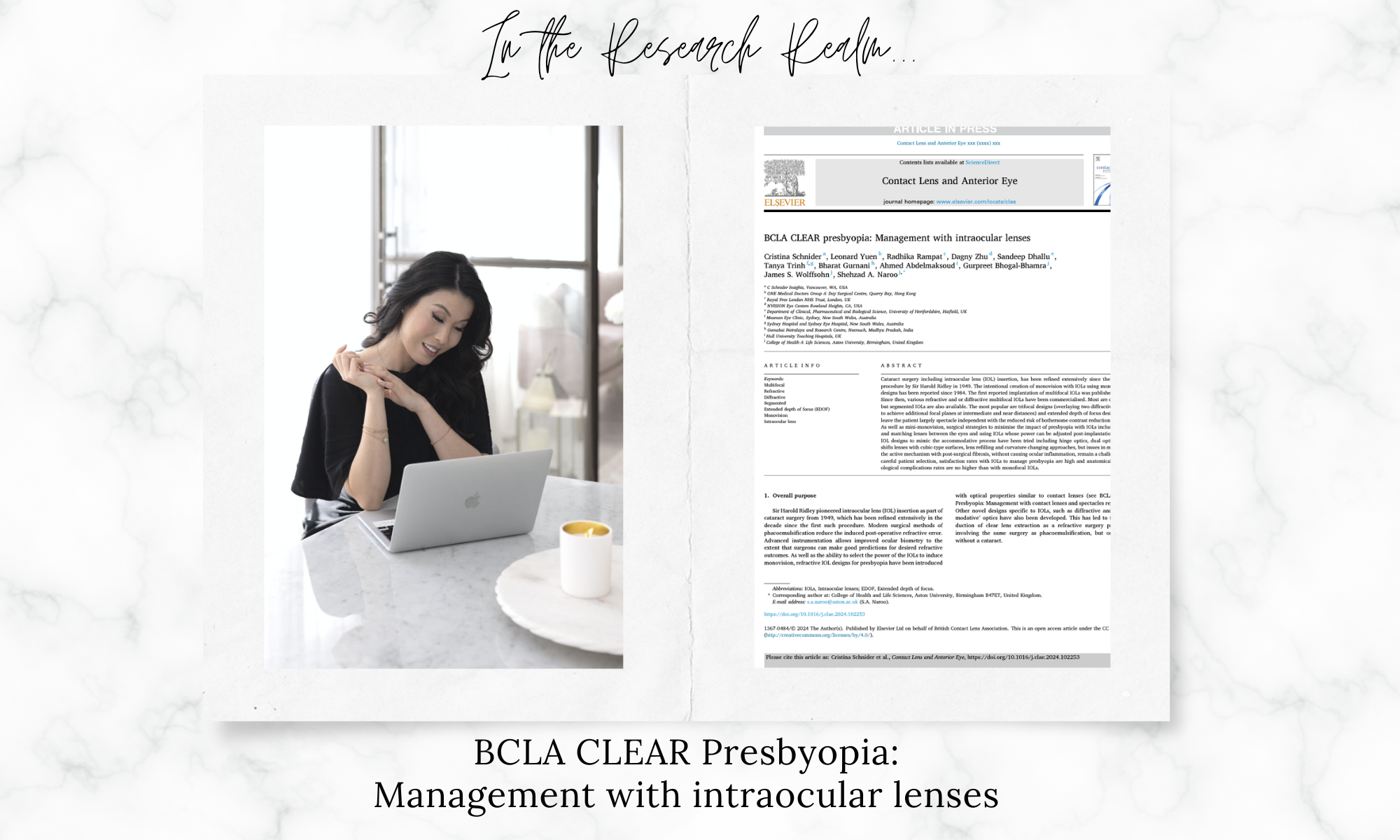
ABSTRACT:
Cataract surgery including intraocular lens (IOL) insertion, has been refined extensively since the first such procedure by Sir Harold Ridley in 1949. The intentional creation of monovision with IOLs using monofocal IOL designs has been reported since 1984. The first reported implantation of multifocal IOLs was published in 1987. Since then, various refractive and or diffractive multifocal IOLs have been commercialised. Most are concentric, but segmented IOLs are also available. The most popular are trifocal designs (overlaying two diffractive patterns to achieve additional focal planes at intermediate and near distances) and extended depth of focus designs which leave the patient largely spectacle independent with the reduced risk of bothersome contrast reduction and glare. As well as mini-monovision, surgical strategies to minimise the impact of presbyopia with IOLs includes mixing and matching lenses between the eyes and using IOLs whose power can be adjusted post-implantation. Various IOL designs to mimic the accommodative process have been tried including hinge optics, dual optics, lateral shifts lenses with cubic-type surfaces, lens refilling and curvature changing approaches, but issues in maintaining the active mechanism with post-surgical fibrosis, without causing ocular inflammation, remain a challenge. With careful patient selection, satisfaction rates with IOLs to manage presbyopia are high and anatomical or physiological complications rates are no higher than with monofocal IOLs.
Cristina Schnider, Leonard Yuen, Radhika Rampat, Dagny Zhu, Sandeep Dhallu, Tanya Trinh, Bharat Gurnani, Ahmed Abdelmaksoud, Gurpreet Bhogal-Bhamra, James S. Wolffsohn, Shehzad A. Naroo, BCLA CLEAR presbyopia: Management with intraocular lenses,
Contact Lens and Anterior Eye, 2024,
https://doi.org/10.1016/j.clae.2024.102253.
For more of my publications, head to Publications & Research.
Dr. Trinh is a fully certified RANZCO (Australian) ophthalmologist with extensive fellowship expertise specializing in cornea, cataract and refractive surgery. She is also a fellow of the World College of Refractive Surgery and Vision Sciences.